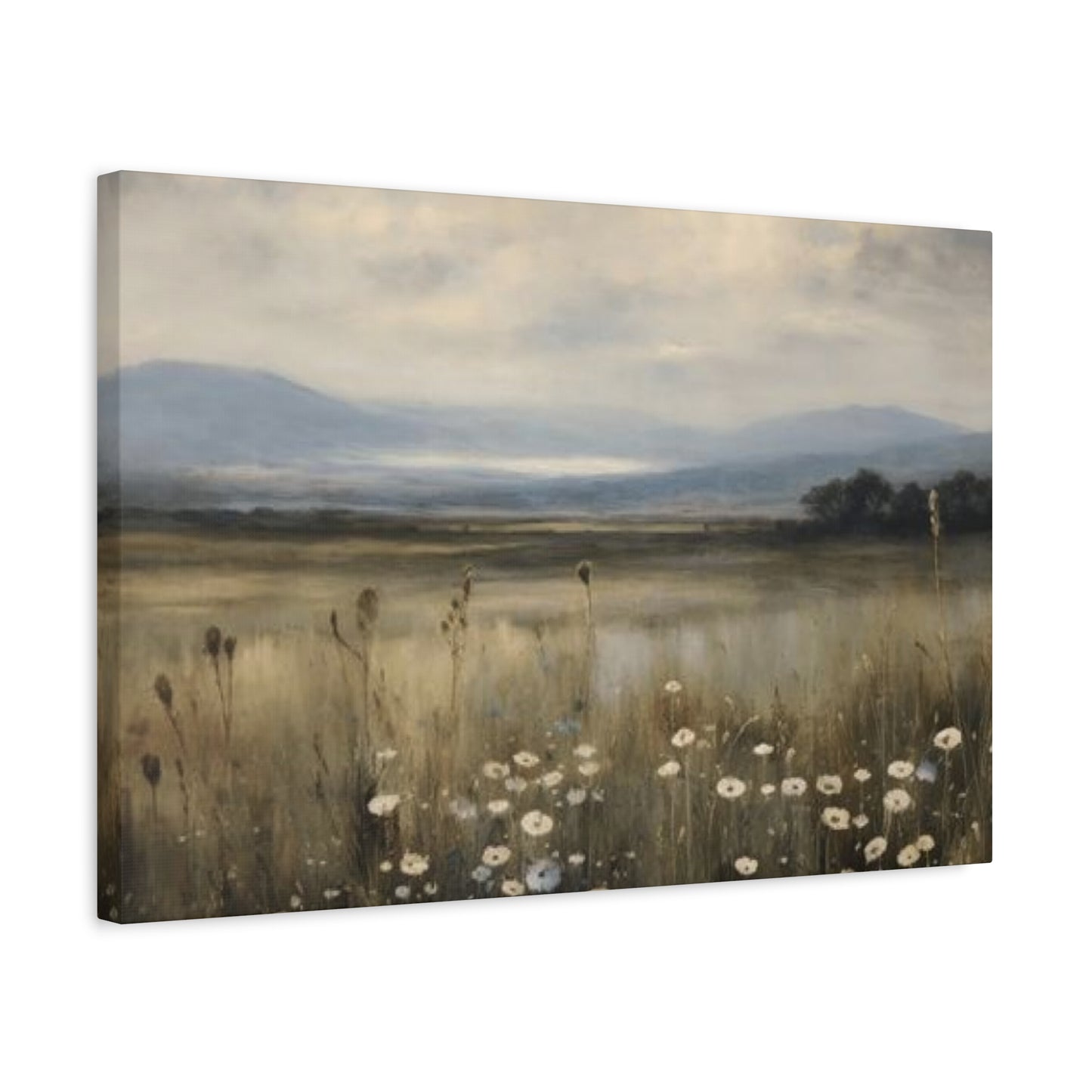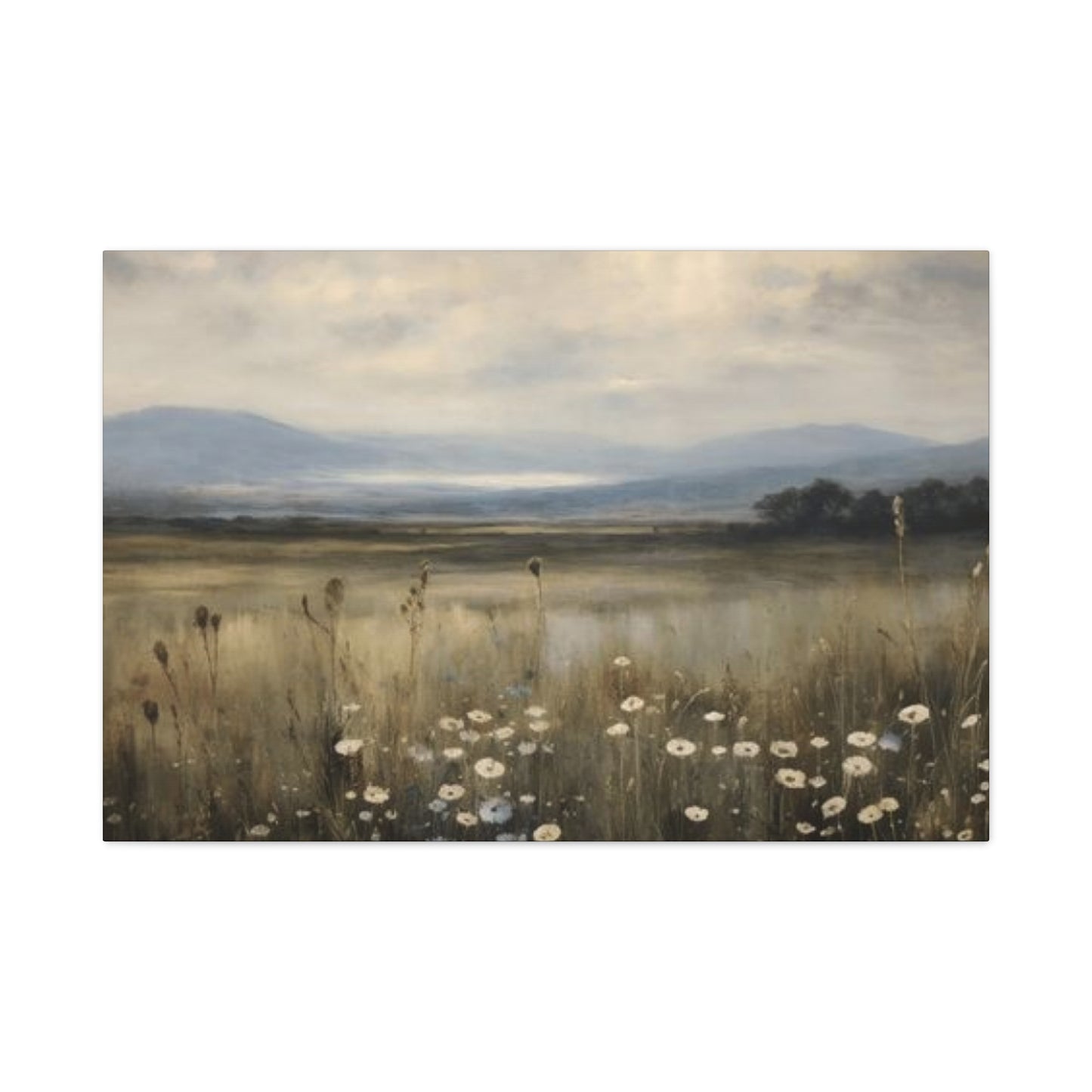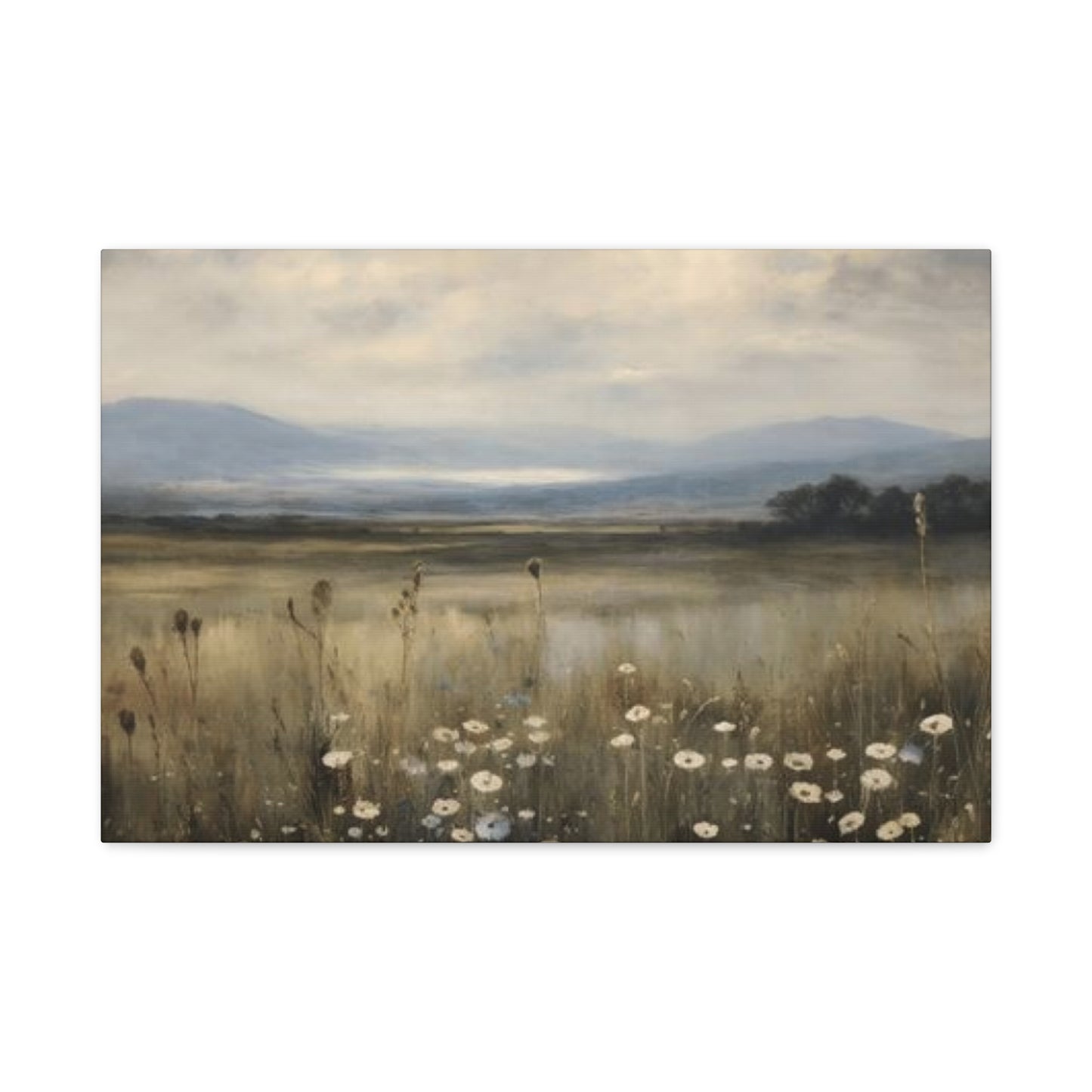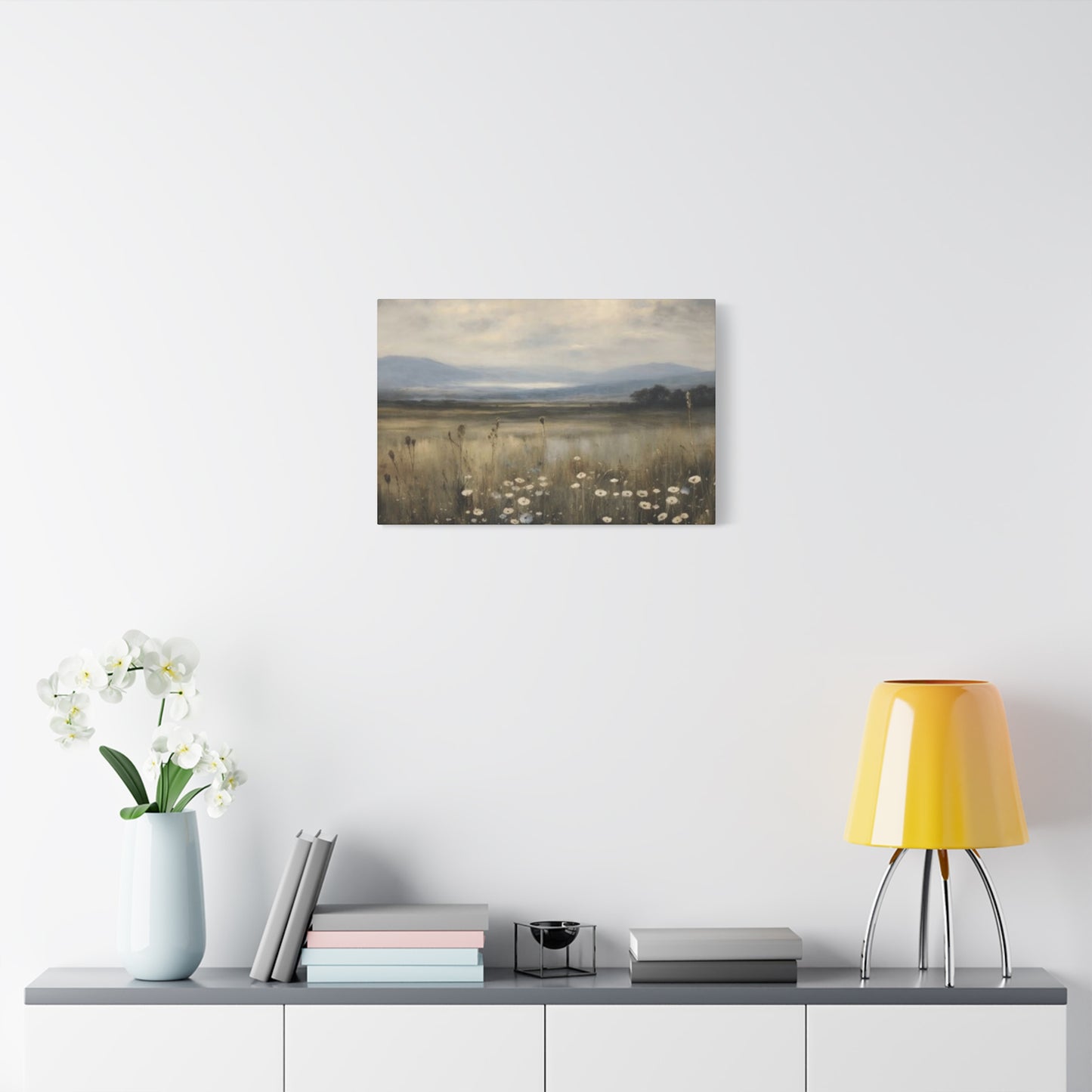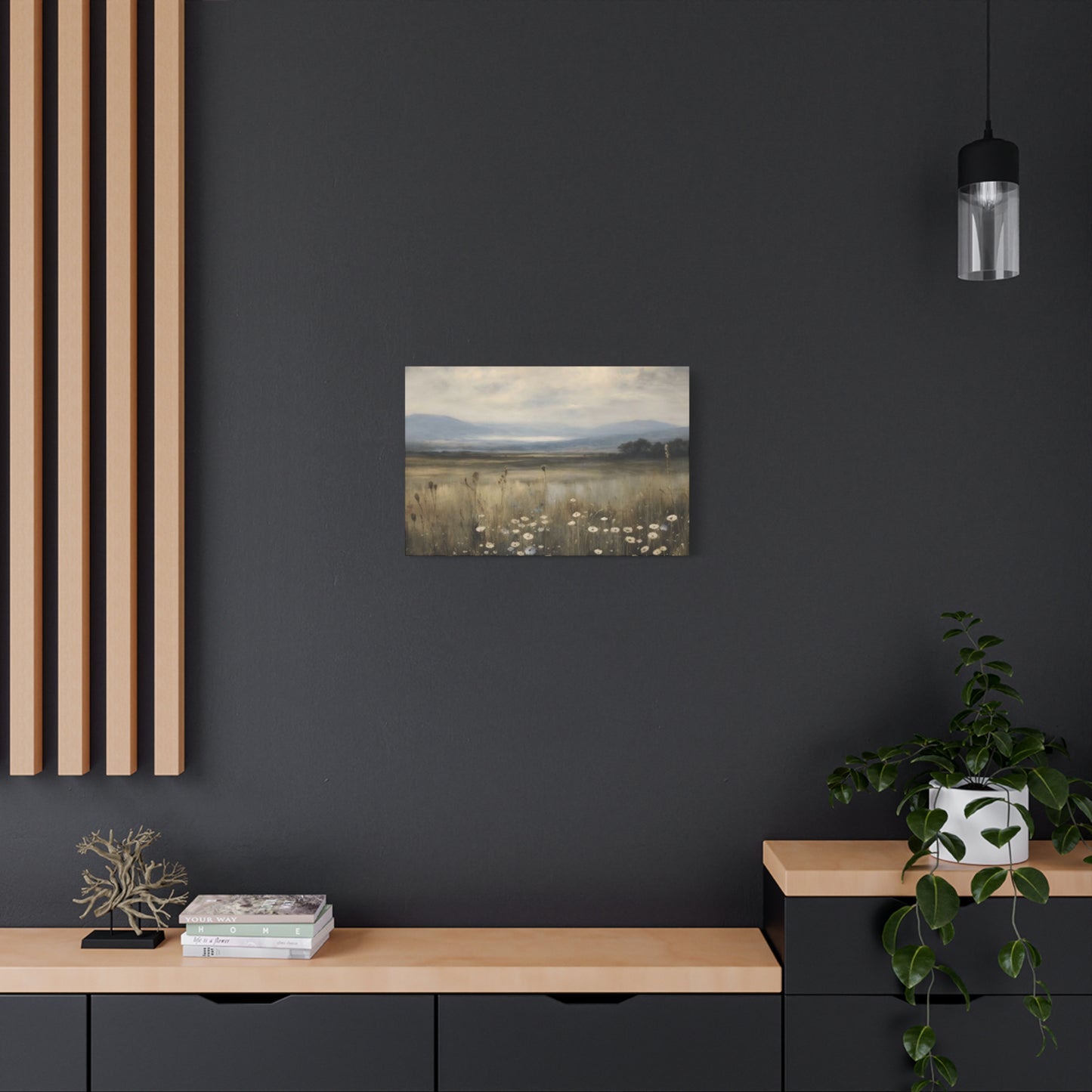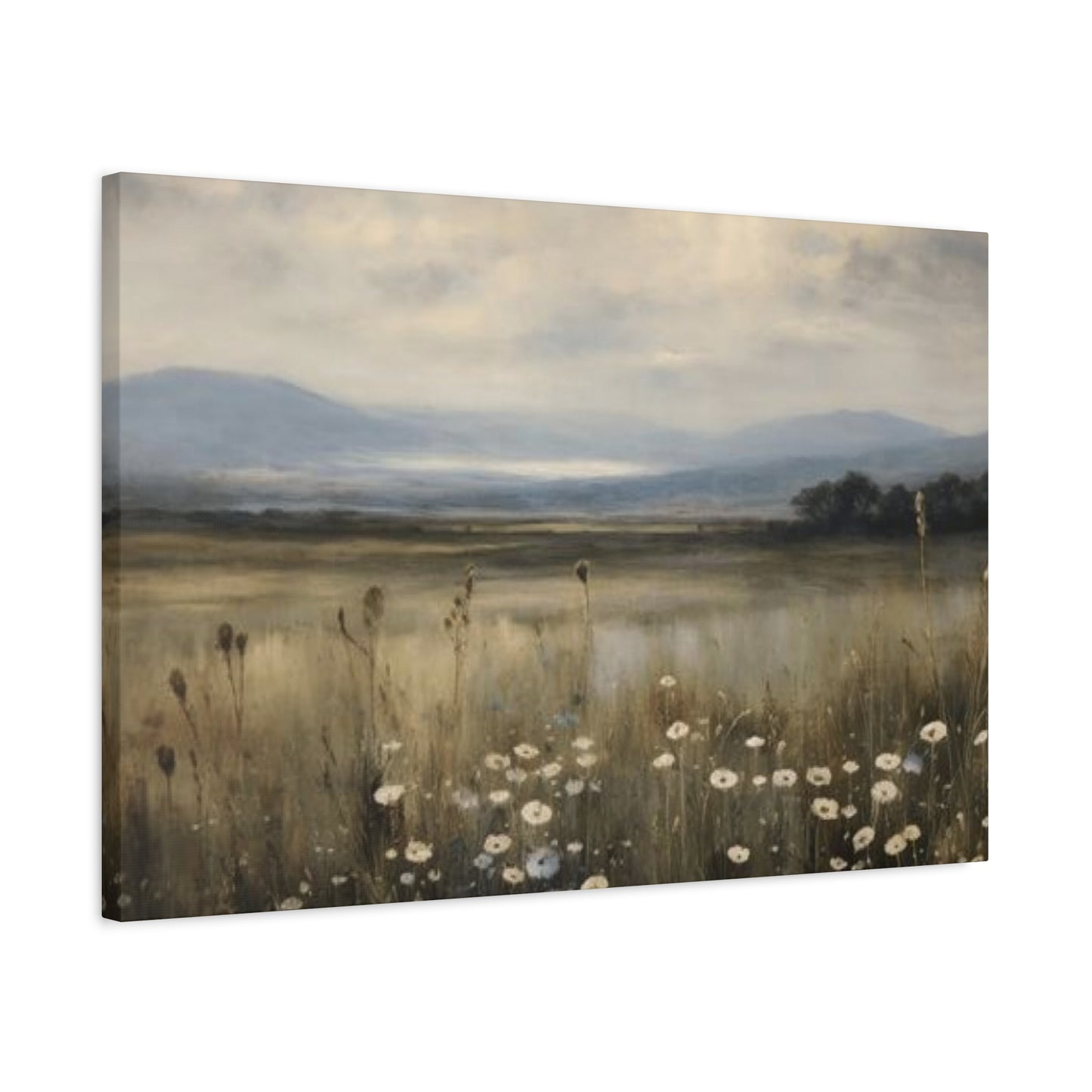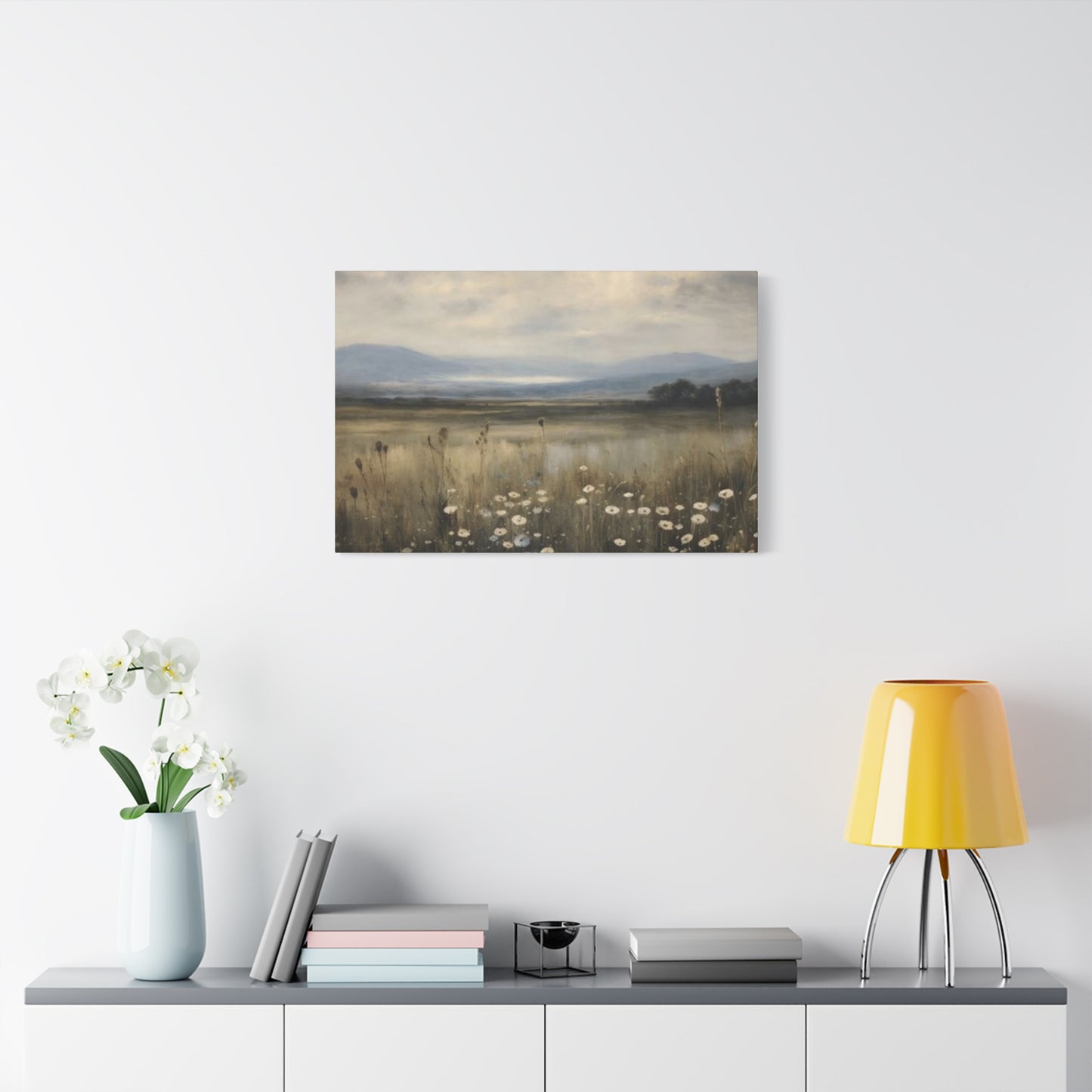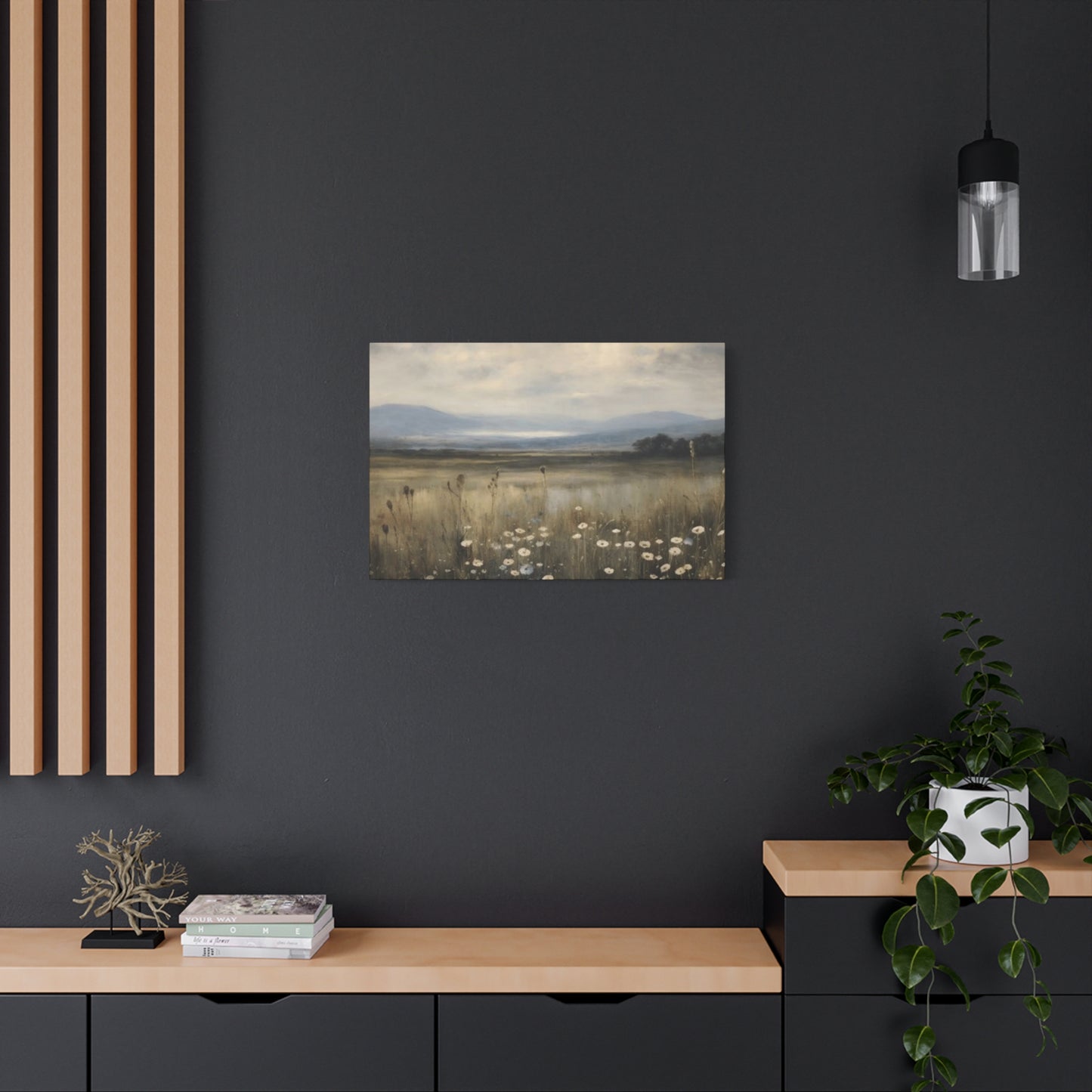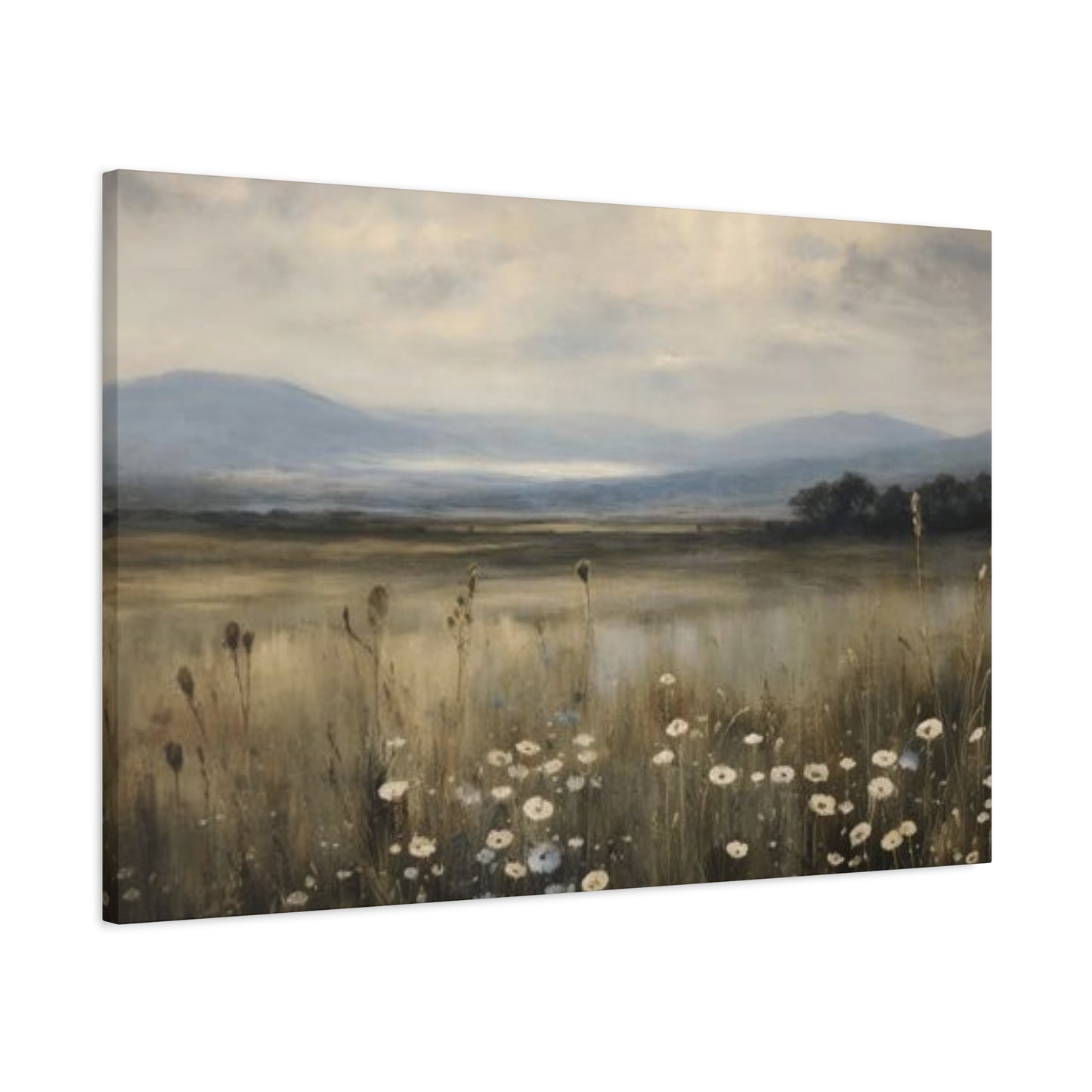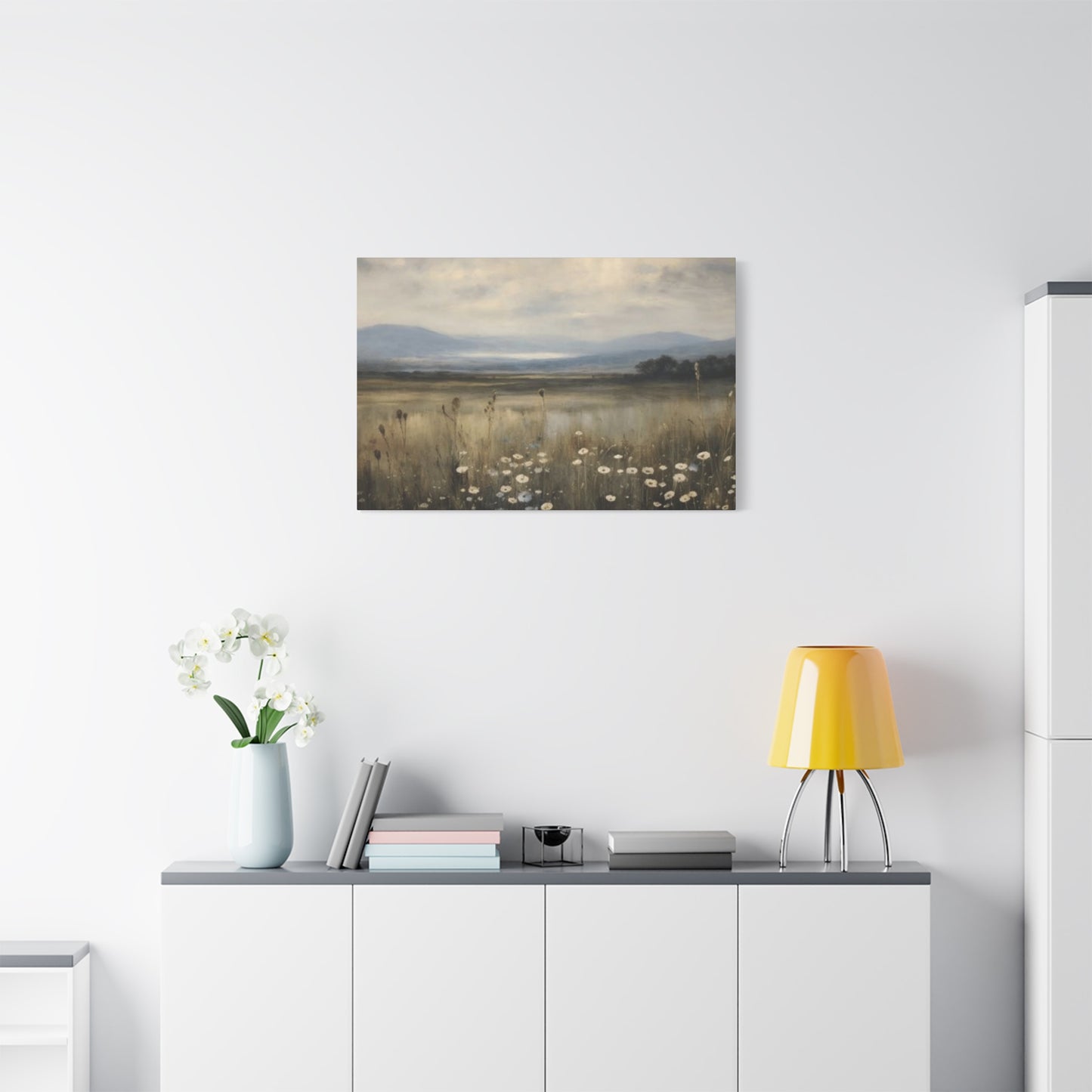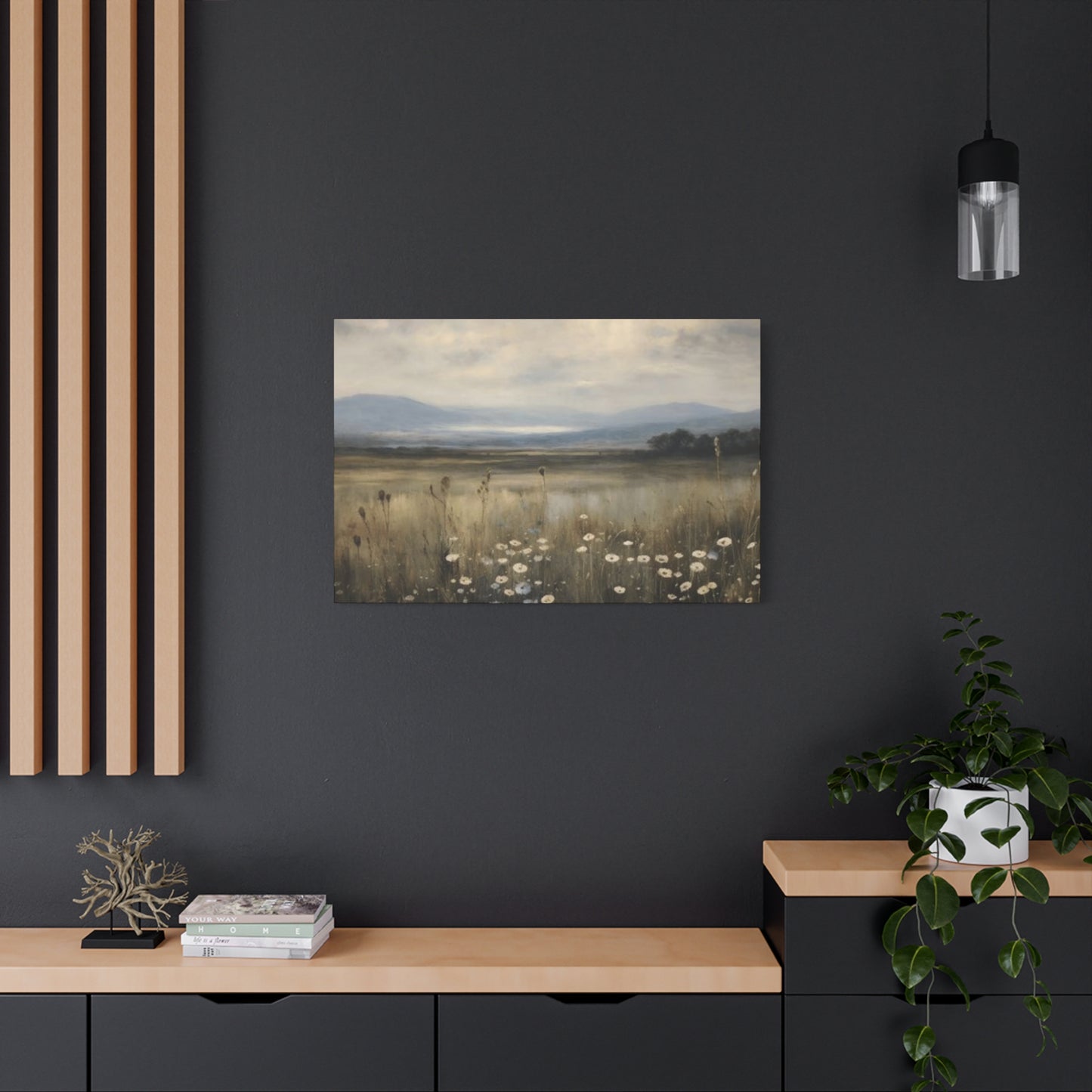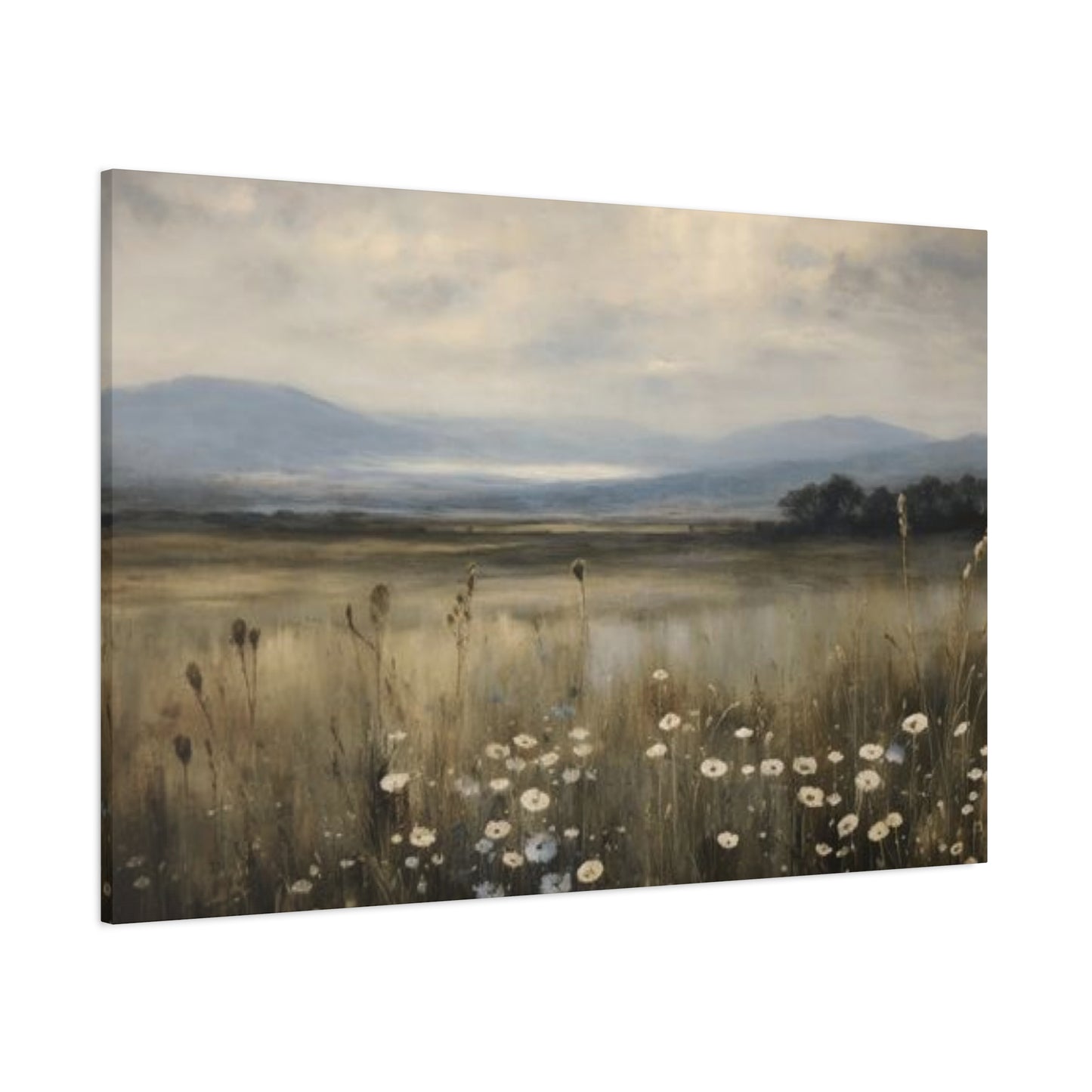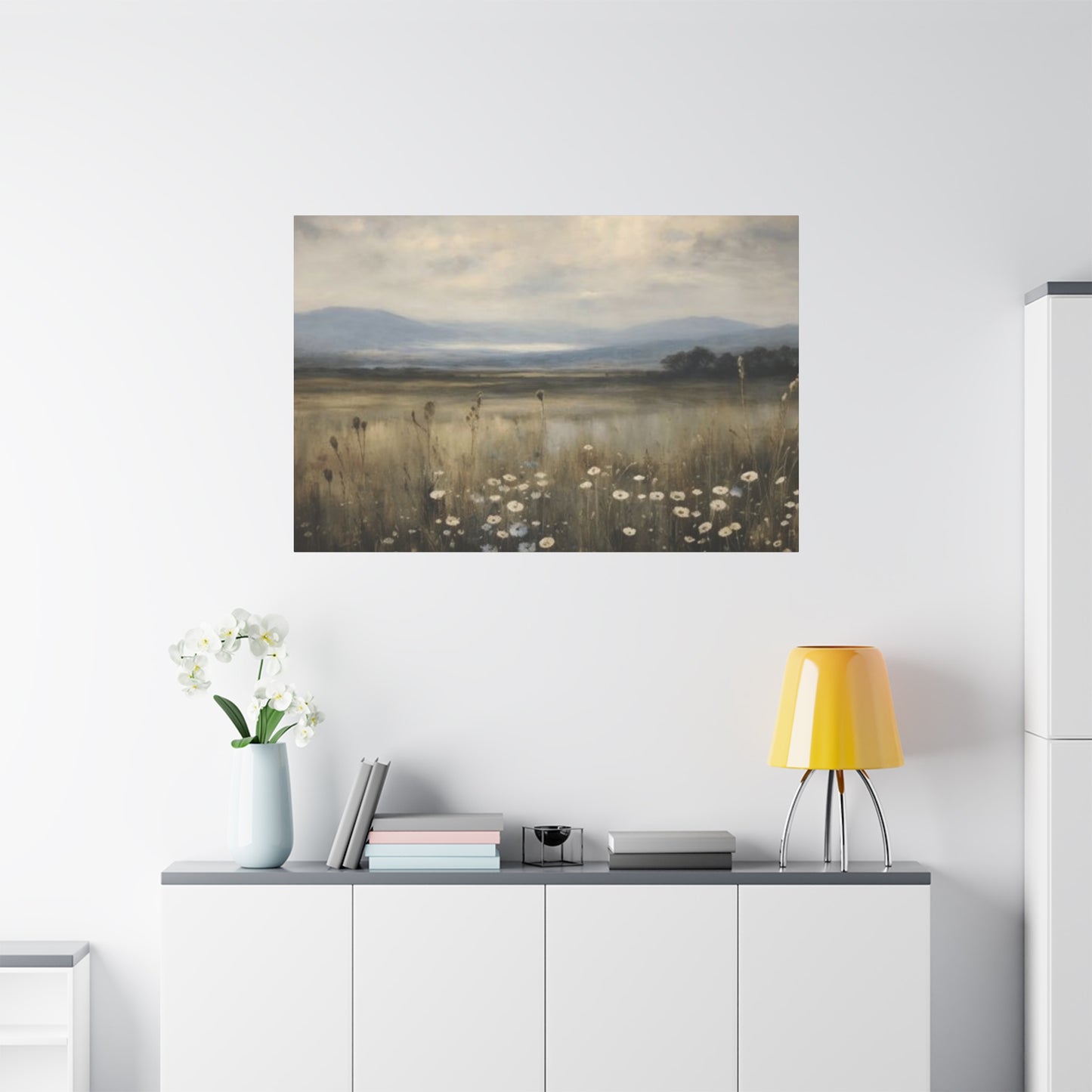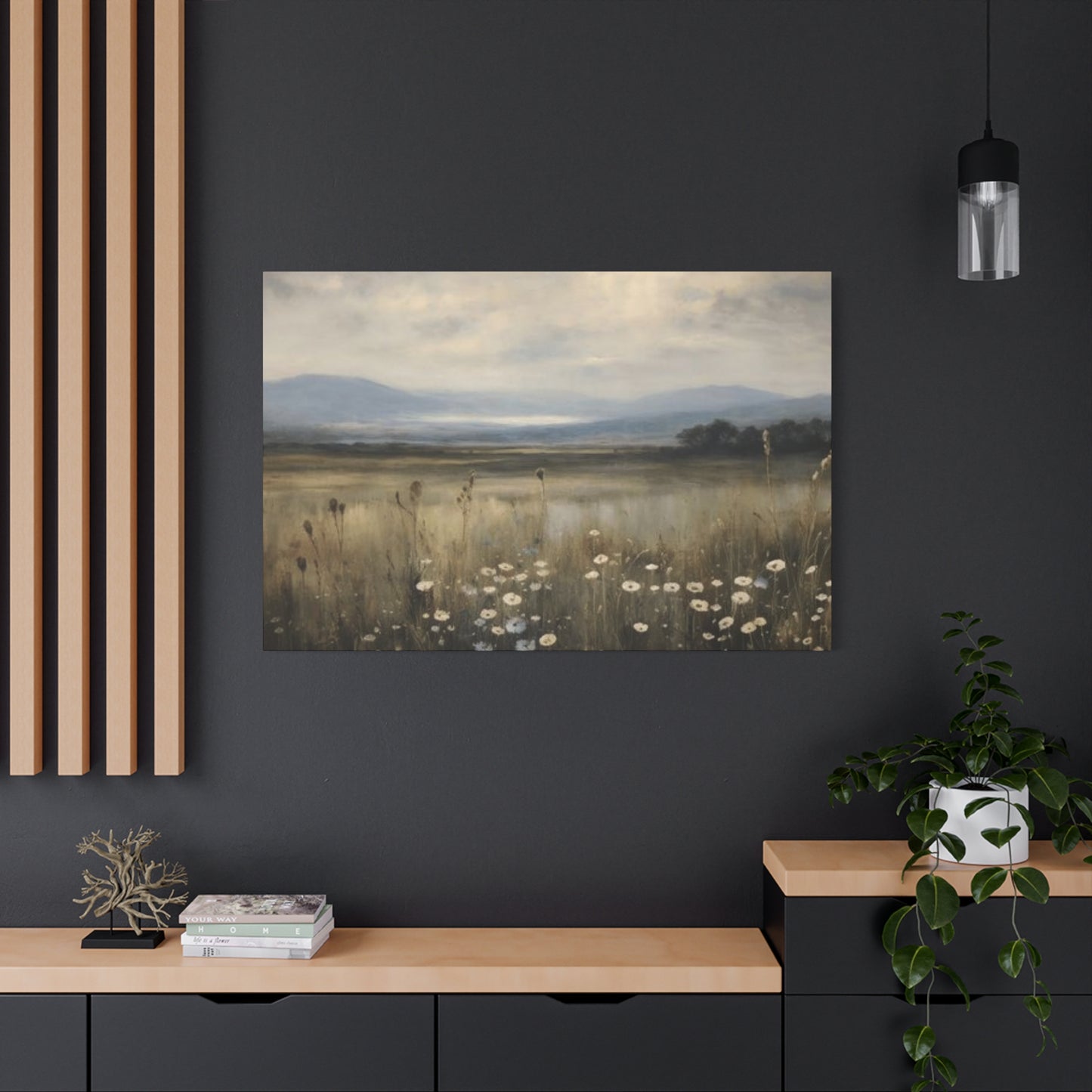Nature Fine Wall Art: Creating Serene Environments Through Natural Beauty
The profound connection between humans and the natural world has inspired countless artistic expressions throughout history. Today, nature wall art serves as a powerful medium to bridge the gap between our indoor environments and the breathtaking beauty of the outdoors. These artistic representations of natural landscapes, flora, and fauna offer more than mere decoration; they provide a gateway to tranquility, inspiration, and emotional well-being within our homes and workplaces.
Nature wall art encompasses a vast spectrum of artistic interpretations, from photorealistic depictions of majestic mountain ranges to abstract representations of flowing water or rustling leaves. This diverse art form allows individuals to curate their environments with pieces that resonate with their personal connection to nature, whether they find solace in dense forest canopies, expansive ocean horizons, or delicate floral arrangements.
The appeal of nature-themed artwork extends beyond aesthetic considerations. Scientific research has consistently demonstrated the positive psychological effects of natural imagery on human well-being. When we surround ourselves with representations of nature, we tap into an inherent biological response that promotes relaxation, reduces stress levels, and enhances our overall quality of life. This phenomenon, known as biophilia, explains why nature wall art has become increasingly popular in contemporary home decoration and commercial design.
Celebrate the Outdoors with Nature Fine Wall Art
Creating a celebration of outdoor beauty within indoor environments requires careful consideration of both artistic quality and thematic coherence. Nature fine wall art serves as an invitation to experience the wonder of the natural world without leaving the comfort of our homes. This celebration begins with selecting pieces that capture the essence of outdoor experiences, from the gentle rustle of autumn leaves to the powerful crash of ocean waves against rocky shores.
The celebration of nature through fine wall art involves more than simply hanging landscape photographs on walls. It requires a thoughtful approach to curating collections that tell stories, evoke emotions, and create atmospheric experiences. Consider how different natural elements can work together to create a cohesive narrative throughout your living environment. A series depicting the changing seasons, for instance, can provide a year-round celebration of nature's cyclical beauty.
Fine art prints featuring national parks and wilderness areas allow us to celebrate some of the world's most pristine natural environments. These pieces serve as windows to distant landscapes, bringing the majesty of places like Yellowstone, Yosemite, or the Swiss Alps into our daily lives. The celebration extends beyond mere appreciation; it becomes a form of environmental advocacy, reminding us of the importance of preserving these natural treasures for future generations.
The celebration of outdoor beauty through wall art also encompasses the intimate moments found in nature – dewdrops on spider webs, the intricate patterns of tree bark, or the delicate veining of leaves. These micro-celebrations of natural detail can be equally powerful in creating connections to the outdoor world. Fine art that captures these subtle elements often provides the most profound impact, inviting viewers to slow down and appreciate the intricate beauty that surrounds us in nature.
Contemporary artists continue to push the boundaries of how we celebrate nature through fine art. Mixed media pieces that combine traditional photography with digital manipulation, watercolor paintings that capture the ethereal quality of morning mist, and abstract interpretations that distill natural forms into their essential elements all contribute to this ongoing celebration. The diversity of artistic approaches ensures that every individual can find pieces that resonate with their personal way of experiencing and celebrating the natural world.
The celebration of nature through fine wall art also serves an educational purpose. Many pieces incorporate information about the depicted ecosystems, wildlife, or geological formations, transforming our homes into informal nature museums. This educational aspect adds depth to the celebration, encouraging viewers to learn more about the natural world and perhaps inspiring them to seek out these experiences in person.
When selecting nature fine wall art to celebrate the outdoors, consider the emotional response you wish to evoke. Dramatic mountain landscapes might inspire feelings of adventure and exploration, while gentle pastoral scenes could promote relaxation and contemplation. The celebration of nature through art is deeply personal, and the most effective pieces are those that align with your individual connection to the natural world.
Stunning Natural Scenes for Your Walls
The selection of stunning natural scenes for wall display requires an understanding of both artistic composition and the emotional impact of different landscapes. Natural scenes possess an inherent power to transform environments, creating focal points that draw the eye and imagination toward the beauty of the outdoors. These scenes range from sweeping panoramic vistas to intimate close-ups of natural details, each offering unique opportunities to enhance your living environment.
Mountainous landscapes represent some of the most popular stunning natural scenes for wall art. The dramatic vertical lines of peaks reaching toward the sky create a sense of grandeur and aspiration that can elevate any room's atmosphere. Whether depicting snow-capped summits bathed in golden sunrise light or rugged cliff faces shrouded in mysterious mist, mountain scenes bring a sense of permanence and strength to indoor environments. These images work particularly well in larger formats, where their scale can be fully appreciated and their impact maximized.
Coastal scenes offer another category of stunning natural imagery that resonates with many viewers. The endless horizon where ocean meets sky creates a sense of infinite possibility, while the rhythmic patterns of waves provide visual movement and energy. Dramatic seascapes featuring crashing waves against rocky shores can energize a room, while serene beach scenes with gentle lapping waves promote tranquility and relaxation. The changing colors of water – from deep navy blues to turquoise shallows – provide rich color palettes that can complement various design schemes.
Forest scenes bring the mystery and depth of woodland environments indoors. The interplay of light and shadow filtering through tree canopies creates dynamic visual interest, while the vertical lines of tree trunks add structural elements to compositions. Dense forest scenes can create feelings of intimacy and protection, while sun-dappled clearings suggest openness and renewal. Seasonal variations in forest scenes – from the fresh greens of spring to the warm golds and reds of autumn – allow for rotating displays that reflect the changing year.
Desert landscapes provide stunning natural scenes with unique character and beauty. The subtle color variations in sand dunes, the dramatic silhouettes of cacti against sunset skies, and the vast open spaces of arid regions create compositions with powerful emotional impact. Desert scenes often feature minimalist aesthetics that work well in contemporary settings, while their warm color palettes can add warmth and energy to cooler environments.
Waterfall scenes combine multiple natural elements to create particularly dynamic wall art. The vertical movement of cascading water contrasts beautifully with the solid horizontal and diagonal lines of surrounding rock formations. The play of light on moving water creates visual interest and suggests the sound and motion absent from static imagery. These scenes work exceptionally well in bathrooms or near water features, where they can enhance the overall sensory experience.
Prairie and grassland scenes offer stunning natural imagery with subtle beauty. The horizontal expanses of waving grasses under vast skies create compositions with peaceful, meditative qualities. These scenes often feature dramatic cloud formations and changing light conditions that add visual interest to seemingly simple landscapes. The gentle curves of rolling hills and the vertical accents of isolated trees create harmonious compositions that promote relaxation and contemplation.
How Nature Fine Art Brings Calm Indoors
The mechanism by which nature fine art brings calm to indoor environments operates on both psychological and physiological levels. Scientific research in environmental psychology has documented the measurable effects of natural imagery on stress reduction, blood pressure lowering, and improved mental well-being. When we view representations of nature, our nervous systems respond as if we were actually experiencing these natural environments, triggering relaxation responses that have evolved over millions of years of human development.
The calming effect of nature fine art begins with color psychology. Natural scenes typically feature color palettes that promote relaxation – the blues and greens of water and foliage, the warm earth tones of soil and rock, and the soft pastels of dawn and dusk skies. These colors have been shown to lower heart rate and reduce cortisol levels, creating measurable physiological changes that contribute to feelings of calm and well-being. Unlike the harsh artificial colors often found in urban environments, natural color schemes work in harmony with our biological predispositions.
Compositional elements in nature fine art also contribute to its calming effects. The organic curves found in natural forms – flowing water, rolling hills, curved tree branches – create visual rhythms that feel harmonious and peaceful. These organic shapes contrast with the angular, geometric forms that dominate most indoor environments, providing visual relief and reducing the psychological stress associated with overly structured surroundings. The fractal patterns found throughout nature, from coastlines to tree branches to cloud formations, have been shown to reduce stress and promote mental recovery.
The representation of natural movement in fine art creates a sense of gentle dynamism that can be deeply calming. Images of flowing water, swaying grass, or drifting clouds suggest motion without the jarring quality of urban movement like traffic or machinery. This gentle suggestion of movement can help viewers feel connected to the natural rhythms that regulate our biological cycles, promoting a sense of balance and harmony that contributes to overall calm.
Nature fine art brings calm indoors by providing visual escapes from the immediate environment. When we look at a peaceful forest scene or a serene lake view, our minds can momentarily transport us to these tranquil settings. This mental escapism provides a break from daily stresses and allows for brief meditative experiences throughout the day. The cumulative effect of these micro-meditative moments can significantly impact overall stress levels and mental well-being.
The scale and perspective commonly found in nature fine art also contribute to its calming effects. Many natural scenes feature expansive views that suggest vast open areas, helping to counteract feelings of claustrophobia or confinement that can develop in enclosed indoor environments. Even in smaller living areas, large-scale nature prints can create the illusion of expanded territory, promoting feelings of freedom and reducing psychological pressure.
Seasonal representations in nature fine art can help maintain connection to natural cycles, which is essential for psychological well-being. Many people experience disconnection from seasonal changes when spending most of their time indoors, leading to seasonal affective disorders and other mood-related issues. Nature wall art that reflects seasonal changes can help maintain awareness of natural cycles and provide the psychological benefits associated with seasonal variation.
The presence of water in nature fine art has particularly strong calming effects. Images of lakes, streams, waterfalls, or ocean scenes tap into our fundamental biological need for water and trigger relaxation responses associated with hydration and safety. The sound associations we make with water imagery – gentle lapping waves, babbling brooks, or falling rain – can create audio-visual synesthesia that enhances the calming experience even when viewing silent images.
Decorating Tips with Nature-Inspired Prints
Successful incorporation of nature-inspired prints into home decoration requires strategic thinking about placement, scale, color coordination, and thematic consistency. The goal is to create environments where these natural elements feel integrated rather than simply applied as afterthoughts. This integration process begins with understanding how nature-inspired prints can work with existing architectural features and furniture to create cohesive design schemes.
Scale considerations are paramount when working with nature-inspired prints. Large-scale images work best as focal points in primary seating areas or dining rooms, where they can command attention and create conversation pieces. Medium-sized prints work well in bedrooms and secondary living areas, providing visual interest without overwhelming smaller environments. Small nature prints can be grouped together to create gallery walls or used as accent pieces in bathrooms, kitchens, or hallways.
Color coordination between nature-inspired prints and existing design elements requires careful attention to both dominant and accent colors. Many successful decorating schemes use nature prints to introduce color palettes that are then echoed in textiles, accessories, and other decorative elements throughout the room. For example, a forest scene featuring autumn colors might inspire the selection of throw pillows, curtains, or area rugs in complementary oranges, golds, and deep greens.
Lighting plays a crucial role in displaying nature-inspired prints effectively. Natural light exposure can cause fading over time, so prints should be positioned to minimize direct sunlight while still receiving enough ambient light to be properly appreciated. Artificial lighting should be chosen to enhance the colors and details in nature prints without creating glare or reflections that interfere with viewing. Picture lights, track lighting, or strategically placed table lamps can create dramatic effects that bring nature prints to life.
Frame selection for nature-inspired prints should complement both the artwork and the overall design scheme. Natural wood frames often work well with outdoor-themed imagery, but the wood tone should coordinate with existing furniture and architectural elements. Metal frames in bronze, silver, or black can provide clean, contemporary presentations that work well in modern settings. The width and profile of frames should be proportionate to both the size of the prints and the scale of the rooms where they will be displayed.
Grouping nature-inspired prints creates opportunities for storytelling and thematic development. A series depicting different seasons, various types of landscapes, or the progression from dawn to dusk can create narrative interest that enhances the decorative impact. When grouping multiple prints, consistency in framing, matting, and spacing creates visual harmony, while variation in subject matter maintains interest and prevents monotony.
The height at which nature-inspired prints are hung significantly affects their impact and integration with room design. Generally, prints should be hung so that their centers fall at eye level when viewers are seated or standing in the primary viewing position. In dining rooms, this might mean hanging prints to be viewed from seated positions, while in hallways, standing eye level is more appropriate. Large prints may need to be hung slightly lower to maintain visual balance with furniture pieces.
Creating balance between nature-inspired prints and other decorative elements prevents any single element from dominating the design scheme. Nature prints should feel like integral parts of the overall decoration rather than isolated additions. This integration can be achieved by selecting prints that share color elements with other room features, by positioning prints to create visual dialogue with furniture pieces, and by using accessories that bridge the gap between the natural imagery and the designed environment.
Seasonal rotation of nature-inspired prints can keep decorative schemes fresh and responsive to changing conditions outside. Having collections of prints representing different seasons allows for periodic updates that maintain interest and connection to natural cycles. This rotation strategy works particularly well in frequently used areas like living rooms and kitchens, where occupants will notice and appreciate the changes.
Fine Art That Captures Nature's Beauty
The creation of fine art that truly captures nature's beauty requires a deep understanding of both artistic technique and the essential qualities that make natural environments so compelling. Artists working in this genre must master the ability to translate three-dimensional, multi-sensory natural experiences into two-dimensional visual representations that retain the power to move and inspire viewers. This translation process involves not just technical skill, but also an intuitive understanding of what makes natural beauty so universally appealing.
Light plays the most crucial role in fine art that captures nature's beauty. The quality of light in natural environments – whether it's the golden hour glow of sunrise, the dappled shadows of forest canopy, or the dramatic contrast of storm light – creates the emotional impact that distinguishes truly exceptional nature art. Artists must understand how light interacts with different natural elements and be able to recreate these effects through their chosen medium, whether photography, painting, or digital art.
The capture of natural beauty also requires attention to the infinite detail found in natural environments. From the intricate patterns of bark on ancient trees to the delicate structure of snowflakes, nature provides endless opportunities for artistic exploration. Fine artists learn to balance the inclusion of these details with overall compositional needs, knowing when to emphasize texture and when to simplify forms for greater emotional impact.
Movement and energy in natural environments present particular challenges for static artistic media. The flow of water, the sway of grass in wind, the migration of clouds across sky – these dynamic elements must be suggested rather than literally depicted. Master artists develop techniques for implying movement through compositional devices, brushwork, or photographic timing that allows viewers to sense the motion inherent in living landscapes.
Color relationships in nature provide some of the most sophisticated palettes available to artists. The subtle gradations found in natural phenomena – the transition from deep ocean blue to pale sky at the horizon, the warm-to-cool shifts in mountain atmospherics, or the infinite greens of forest environments – require artists to develop exceptional color sensitivity. Understanding how colors interact in natural light versus artificial light becomes essential for creating fine art that maintains its impact in indoor viewing environments.
The emotional content of natural beauty often resides in qualities that transcend literal representation. The sense of age and permanence in ancient forests, the feeling of freedom in wide open landscapes, or the intimacy of secluded natural settings – these emotional qualities must be captured through artistic interpretation rather than mere documentation. Successful fine artists learn to identify and emphasize the emotional essence of natural scenes.
Scale relationships in nature art require careful consideration to maintain the sense of grandeur or intimacy that makes natural environments so powerful. A mountain range that inspires awe in person can become mundane in a small print, while delicate natural details might lose their impact when enlarged beyond their natural scale. Artists must understand how scale affects emotional response and choose presentation formats that preserve the intended impact of their work.
The temporal aspects of natural beauty – the way landscapes change with seasons, weather, and time of day – provide rich material for fine artists. Capturing these temporal variations allows viewers to experience nature's dynamic qualities even in static artwork. Series that show the same location under different conditions, or single works that suggest the passage of time, can effectively communicate nature's ever-changing beauty.
Contemporary fine artists working with nature themes often incorporate environmental consciousness into their work, using their art to highlight the beauty of threatened landscapes or endangered species. This approach adds layers of meaning to nature art, transforming aesthetic appreciation into environmental advocacy. The most effective examples of this approach maintain artistic quality while communicating their conservation message.
Perfect Nature Wall Art for Every Room
Selecting appropriate nature wall art for different rooms requires understanding how various natural themes and artistic styles interact with room functions and design requirements. Each room in a home serves different purposes and creates different moods, and nature wall art should be chosen to enhance and support these intended functions. The goal is to create harmonious relationships between natural imagery and room usage that feel both intentional and effortless.
Living rooms, as primary gathering areas, benefit from nature wall art that promotes conversation and creates welcoming atmospheres. Large-scale landscape pieces work particularly well as focal points above seating areas, providing visual anchors that draw people together. Dramatic mountain vistas, expansive ocean scenes, or peaceful forest clearings can create sense of shared adventure or tranquility that enhances social interaction. The key is selecting pieces with enough visual interest to engage viewers without being so complex or intense that they overwhelm conversation.
Bedroom environments call for nature wall art that promotes rest and relaxation. Gentle pastoral scenes, serene lake views, or soft forest scenes filtered through morning light create calming atmospheres conducive to sleep and renewal. Color palettes for bedroom nature art should lean toward cooler, more subdued tones that won't stimulate alertness when it's time to wind down. Avoiding overly dramatic or energetic natural scenes helps maintain the peaceful sanctuary quality that bedrooms should provide.
Dining room nature wall art should complement the social and sensual aspects of shared meals. Seasonal landscapes that reflect harvest themes, lush garden scenes, or peaceful outdoor settings where one might imagine picnicking all work well in dining environments. The artwork should be positioned to be visible from seating positions but not so dominant as to interfere with table conversation. Medium-scale pieces or coordinated groupings often work better than single large pieces in dining rooms.
Kitchen nature wall art faces unique challenges from cooking activities but offers opportunities to celebrate the connection between food and natural environments. Herb garden scenes, fruit tree imagery, or morning landscape views can create pleasant atmospheres for meal preparation activities. Practical considerations include selecting pieces that can withstand humidity and temperature variations, and positioning artwork away from direct exposure to cooking splatter or steam.
Bathroom nature wall art should reflect the cleansing and renewal themes associated with water and personal care routines. Waterfall scenes, peaceful stream views, spa-like natural settings, or botanical themes work particularly well in bathroom environments. The humid conditions in bathrooms require careful selection of materials and framing to prevent moisture damage, but the private, intimate nature of bathroom use allows for very personal nature art choices.
Home office environments benefit from nature wall art that provides mental breaks from work activities while maintaining productivity-supporting atmospheres. Views of distant horizons can provide psychological relief from computer screen focus, while organized natural scenes like geometric rock formations or structured botanical arrangements can subtly reinforce productivity themes. The goal is to create visual rest areas that refresh mental energy without becoming distracting.
Hallway and stair areas offer unique opportunities for nature wall art because viewers typically pass through these areas rather than lingering. Sequential imagery that tells stories or shows progression – such as a series depicting different times of day or seasonal changes – works particularly well in transitional areas. The movement through hallways can be enhanced by artwork that suggests travel through natural environments.
Children's rooms require special consideration for nature wall art selections. Educational themes that introduce children to different ecosystems, friendly animal imagery, or fantasy-influenced natural scenes can stimulate imagination while providing calming influences. Safety considerations include avoiding glass and ensuring secure mounting, while developmental considerations might favor artwork that can grow with children's changing interests and sophistication.
Guest room nature wall art should create welcoming, universally appealing atmospheres that help visitors feel comfortable and at home. Classic landscape themes that avoid overly personal or specific references work well, as do pieces that reflect the local natural environment surrounding your home. The goal is to create pleasant, restful environments that enhance guest experiences without imposing specific artistic preferences.
From Forests to Oceans: Nature Fine Art Themes
The vast diversity of natural environments provides endless inspiration for fine art themes, each offering unique aesthetic qualities and emotional associations. Understanding the distinctive characteristics and appeal of different natural environment themes helps in creating coherent collections and selecting pieces that work well together while providing variety and visual interest. The journey from forest depths to ocean expanses encompasses an incredible range of natural beauty that can transform indoor environments.
Forest themes in fine art capture the mystery, depth, and protective qualities of woodland environments. Dense canopy scenes create feelings of enclosure and intimacy, while sun-dappled clearings suggest openness and discovery. Forest art can range from detailed studies of individual trees to expansive views of rolling forested hills. The vertical emphasis of forest compositions works particularly well in rooms with high ceilings, while the rich greens and earth tones of forest scenes complement warm, natural color schemes in home decoration.
Mountain landscape themes evoke feelings of grandeur, permanence, and aspiration. The dramatic vertical lines and vast scales of mountain scenes create powerful focal points that can dominate room compositions. Alpine themes might include snow-covered peaks, dramatic cliff faces, or peaceful mountain valleys. The color palettes of mountain art vary dramatically with season and lighting conditions, from the stark contrasts of winter scenes to the rich purples and golds of mountain sunsets.
Prairie and grassland themes offer subtle beauty and peaceful, horizontal compositions that work well in contemporary settings. The sweeping lines of grasslands under vast skies create sense of openness and freedom that can make indoor environments feel more spacious. These themes often feature dramatic cloud formations and changing weather patterns that add visual interest to seemingly simple compositions. The gentle curves and warm colors of grassland scenes promote relaxation and contemplation.
Desert themes bring unique color palettes and minimalist compositions to fine art collections. The warm oranges, reds, and golds of desert landscapes create energizing atmospheres, while the clean lines and simple forms of desert compositions work well in modern design settings. Cactus and succulent studies provide opportunities for detailed botanical art, while vast desert vistas offer expansive landscape options. The harsh beauty of desert environments appeals to viewers who appreciate dramatic contrasts and bold simplicity.
Ocean themes encompass an enormous range of artistic possibilities, from intimate tidal pool studies to vast seascape panoramas. The horizontal emphasis of ocean art creates calming, meditative qualities, while the movement suggested by wave patterns adds dynamic interest. Coastal themes might include dramatic rocky shores, peaceful beaches, or mysterious fog-shrouded seascapes. The blues and greens of ocean art provide cooling influences that work well in warm climates or south-facing rooms.
River and stream themes capture the gentle movement and peaceful sounds associated with flowing water. These compositions often feature the interplay between water and surrounding landscapes – trees reflecting in still pools, rocks worn smooth by current, or bridges spanning peaceful waterways. The linear quality of stream compositions can help connect different areas of room designs, while the suggested sound of flowing water adds sensory depth to visual experiences.
Lake themes offer tranquil, reflective qualities that promote meditation and calm. Mirror-like surfaces doubling landscape images create symmetrical compositions with satisfying balance, while rippled surfaces add texture and movement interest. Lake scenes often feature the transition times of dawn and dusk when lighting conditions create the most dramatic effects. The stillness suggested by lake imagery provides counterbalance to the busy energy of modern life.
Botanical themes focus on detailed studies of plant life, from intimate flower portraits to comprehensive garden views. These themes work particularly well in smaller formats and can be effectively grouped to create gallery walls or seasonal displays. Botanical art ranges from scientific illustration styles to impressionistic interpretations, allowing for coordination with various decorating approaches. The educational aspects of botanical themes add intellectual interest to their aesthetic appeal.
Seasonal progression themes create opportunities for rotating displays that maintain connection to natural cycles throughout the year. Spring themes might emphasize new growth and fresh colors, while summer focuses on lush abundance. Autumn themes celebrate color changes and harvest imagery, while winter captures the stark beauty of dormant landscapes. Coordinated seasonal collections allow for regular refreshing of home environments.
Elevate Your Environment with Elegant Nature Prints
The elevation of indoor environments through elegant nature prints requires sophisticated understanding of how artistic quality, presentation, and placement work together to create refined atmospheric effects. Elegant nature prints distinguish themselves through superior artistic vision, technical execution, and presentation quality that allows them to function as serious art pieces rather than mere decoration. This elevation process transforms ordinary rooms into curated environments that reflect discerning taste and appreciation for natural beauty.
Artistic sophistication in nature prints begins with the artist's ability to see beyond obvious natural beauty to discover unique perspectives and emotional depths. Elegant pieces often feature unexpected viewpoints, subtle lighting effects, or compositional approaches that reveal familiar natural subjects in new ways. The difference between snapshot documentation and artistic interpretation becomes crucial in selecting prints that will truly elevate environmental quality.
Technical excellence in printing and materials ensures that elegant nature prints maintain their visual impact and longevity. High-quality printing processes preserve the subtle color gradations and fine details that distinguish superior nature art. Archival papers and pigmented inks prevent fading and color shifts that would compromise the investment in quality artwork. The physical presence of well-produced prints – their texture, weight, and surface quality – contributes to their ability to elevate environmental quality.
Presentation quality through professional framing and matting transforms nature prints into gallery-worthy art pieces. Custom matting in museum-quality materials provides visual separation between artwork and surroundings while protecting the prints from environmental damage. Frame selection should complement both the artwork and the intended environment, with attention to proportions, materials, and finish quality that reflect the sophistication of the prints themselves.
Scale relationships between elegant nature prints and their environments require careful calibration to achieve maximum impact. Oversized prints can create dramatic focal points that anchor entire room designs, while properly scaled smaller pieces can provide subtle elegance that enhances without overwhelming. The goal is to select sizes that feel intentional and well-considered rather than arbitrary or convenience-driven.
Lighting design for elegant nature prints requires professional-level attention to both preservation and presentation concerns. UV-filtering glazing protects valuable prints from light damage while allowing proper color appreciation. Artificial lighting should be designed to enhance the prints' visual qualities without creating glare or reflections that interfere with viewing. The interplay between natural and artificial light throughout the day should be considered in positioning prints for optimal appreciation.
Curatorial approaches to selecting and grouping elegant nature prints create cohesive collections that tell stories or explore themes with intellectual depth. Rather than random accumulation of attractive pieces, elegant collections reflect thoughtful consideration of how individual works relate to each other and to the overall environmental goals. This might involve focusing on specific geographic regions, artistic movements, or thematic concepts that provide unifying threads.
The integration of elegant nature prints with architectural features and furniture requires understanding of visual weight, color relationships, and stylistic compatibility. Prints should feel like natural extensions of the designed environment rather than afterthoughts applied to fill empty wall areas. This integration process might influence furniture selection, paint colors, or lighting decisions to create harmonious relationships between all environmental elements.
Contemporary approaches to elegant nature print display often involve mixed media presentations, layered compositions, or innovative mounting techniques that create three-dimensional effects. These approaches require sophisticated understanding of both traditional and contemporary display methods, as well as confidence in pushing boundaries while maintaining overall elegance and sophistication.
Investment considerations for elegant nature prints include both initial acquisition costs and long-term value retention. Limited edition prints from established artists, unique photographic techniques, or historically significant natural subjects may appreciate in value over time while providing immediate environmental enhancement. Understanding the art market for nature prints helps in making selections that serve both aesthetic and financial goals.
Nature Fine Art for Modern and Classic Decor
The integration of nature fine art into both modern and classic decorating approaches requires understanding how natural imagery interacts with different design philosophies and aesthetic frameworks. While the subject matter of nature art remains constant, the selection, presentation, and integration approaches must adapt to complement specific decorating styles while maintaining the artwork's inherent connection to natural beauty. Success depends on finding balance between artistic integrity and design coherence.
Modern decorating approaches typically emphasize clean lines, minimal ornamentation, and neutral color palettes that allow nature fine art to function as primary visual focal points. In modern settings, nature art often serves as the primary source of color and texture, creating dramatic contrasts with the simplified architectural backgrounds. Large-scale nature prints work particularly well in modern environments, where their scale can be fully appreciated against uncluttered walls and minimal furniture arrangements.
The selection of nature fine art for modern decor often favors abstract or minimalist interpretations of natural subjects. Simplified compositions that distill natural forms to their essential elements coordinate well with modern furniture designs and architectural approaches. Black and white nature photography, geometric interpretations of natural patterns, or close-up studies that emphasize form over literal representation often work better than traditional landscape paintings in modern contexts.
Contemporary framing approaches for modern settings typically favor clean, minimal presentations that don't compete with the artwork for visual attention. Thin metal frames in brushed steel, matte black, or white finishes provide subtle borders without adding decorative elements that might conflict with modern aesthetic principles. Float mounting techniques that create shadow lines around prints can add sophisticated depth effects that enhance modern presentation approaches.
Classic decorating styles accommodate nature fine art through traditional presentation methods and integration with established decorative frameworks. In classic settings, nature art often functions as one element within layered decorative schemes that include multiple art pieces, decorative objects, and ornate architectural features. The challenge becomes making nature art feel at home within these richer, more complex visual environments.
Traditional landscape paintings coordinate naturally with classic decorating approaches, particularly when presented in ornate frames that match the formality of classic furniture and architectural details. Oil paintings of pastoral scenes, detailed botanical illustrations, or romantic interpretations of natural subjects often work better than contemporary photographic approaches in classic settings. The artistic techniques and subject matter should feel consistent with the overall period aesthetic being created.
Color coordination between nature fine art and classic decorating schemes requires attention to traditional color relationships and historical accuracy. Many classic decorating approaches rely on established color palettes that have been refined over centuries, and nature art selections should complement rather than compete with these proven combinations. Rich, saturated colors often work better than pale or muted tones in classic settings.
Transitional decorating approaches that blend modern and classic elements provide opportunities for creative integration of nature fine art. In these settings, artwork can serve as bridging elements that connect different stylistic influences while maintaining overall coherence. Nature subjects provide universal appeal that can work with both traditional and contemporary elements when properly selected and presented.
The scale relationships between nature fine art and different decorating styles require different considerations. Modern approaches often favor larger pieces that can hold their own against simplified backgrounds, while classic settings might benefit from collections of smaller pieces that contribute to overall richness without overwhelming ornate surroundings. Understanding these scale relationships helps in selecting pieces that enhance rather than compete with their decorative contexts.
Seasonal adaptability of nature fine art works differently in modern versus classic settings. Modern approaches might favor rotating single large pieces to maintain clean, uncluttered appearances, while classic settings can accommodate permanent displays of multiple seasonal pieces that contribute to the layered richness expected in traditional decorating. The flexibility to change displays should be planned during initial installation to prevent damage to walls or artwork.
Mixed media approaches that combine nature fine art with other decorative elements require different strategies in modern versus classic settings. Modern approaches might use nature art as inspiration for coordinated accessories in natural materials like wood or stone, while classic approaches might integrate nature art with traditional decorative objects like ceramic vases or textile wall hangings that echo natural themes.
Bringing Freshness to Your Home with Nature Art
The introduction of freshness into home environments through nature art operates on multiple sensory and psychological levels, creating atmospheric changes that can revitalize familiar surroundings and enhance daily living experiences. This freshness effect works through the brain's association of natural imagery with outdoor experiences, clean air, and the renewal cycles that characterize healthy natural environments. Understanding how to maximize these freshening effects helps in selecting and positioning nature art for optimal impact.
Visual freshness begins with the selection of nature art that suggests movement, growth, and vitality rather than static or dormant natural states. Images of flowing water, wind-blown grasslands, or trees in full leaf create sense of life and energy that translates into environmental freshness. The key is choosing pieces that suggest the dynamic qualities of living landscapes rather than frozen or dormant natural scenes that might feel stagnant in indoor environments.
Color psychology plays a crucial role in creating freshness through nature art. Cool blues and greens associated with water and growing plants naturally suggest cleanliness and renewal, while the warm colors of sunrise or flowering plants can energize environments and create feelings of optimism and new beginnings. Understanding how different color palettes affect mood and perception helps in selecting nature art that will provide the desired freshening effects.
Seasonal rotation of nature art provides one of the most effective ways to maintain ongoing freshness in home environments. Just as natural environments change throughout the year, rotating nature art displays can prevent visual stagnation and maintain connection to natural cycles. Spring imagery can introduce feelings of renewal and growth after winter displays, while summer scenes can energize environments during colder months when outdoor activities are limited.
The scale and positioning of nature art affects its ability to freshen environments. Large-scale pieces that suggest expansive outdoor areas can make indoor environments feel less confined and more connected to the broader natural world. Positioning pieces to be visible from multiple areas within rooms maximizes their impact and ensures that their freshening effects reach throughout living areas rather than being confined to single viewing positions.
Lighting conditions significantly affect the freshening impact of nature art. Natural light enhances the connection between indoor nature art and outdoor experiences, while artificial lighting should be designed to maintain the color accuracy and visual appeal of nature pieces throughout different times of day. The interplay between changing natural light and static nature art can create dynamic effects that maintain freshness over time.
The integration of nature art with live plants and natural materials amplifies freshening effects by creating multi-sensory experiences that engage more than just visual perception. The combination of nature imagery with actual plants, natural textures in furnishings, or natural materials like wood and stone creates layered natural experiences that feel more complete and convincing than artwork alone.
Air quality considerations connect the psychological freshness provided by nature art with actual environmental improvements. While nature art cannot directly improve air quality, it can inspire the addition of air-purifying plants, better ventilation practices, or the use of natural materials that contribute to healthier indoor environments. The psychological association between nature imagery and fresh air can motivate practical improvements to indoor air quality.
Maintenance and care of nature art affects its long-term ability to provide freshening effects. Faded, damaged, or dusty artwork loses its connection to vibrant natural experiences and may actually contribute to feelings of neglect or staleness. Regular cleaning, proper lighting protection, and timely replacement or restoration of nature art ensures continued freshening benefits over time.
Conclusion
Nature fine wall art has become an essential element in crafting serene and calming environments within modern homes and workplaces. By bringing the tranquility and beauty of the natural world indoors, these artworks offer more than just decoration—they create spaces where peace, reflection, and inspiration flourish.
As this guide has shown, nature fine art encompasses a wide range of styles and subjects, from breathtaking landscapes and delicate botanical illustrations to abstract interpretations of natural elements. This diversity ensures that there is a perfect piece for every aesthetic preference and interior design style. Whether your taste leans toward realistic photography, impressionistic paintings, or minimalist line art, nature wall art provides a timeless way to connect with the outdoors no matter where you live.
The calming color palettes often found in nature-inspired art—soft greens, gentle blues, warm earth tones—help foster a soothing atmosphere that can reduce stress and enhance well-being. Incorporating these colors and themes into your walls not only complements your existing décor but also promotes a sense of balance and harmony throughout your space.
Furthermore, nature fine wall art encourages mindfulness and presence. Each glance at a serene forest scene or a delicate flower can serve as a gentle reminder to slow down, breathe, and appreciate the simple beauty of life. This emotional connection is one of the key reasons why nature art remains a perennial favorite among interior designers and homeowners alike.
In conclusion, choosing nature fine wall art is more than a design decision—it’s an investment in creating a peaceful sanctuary within your home. By surrounding yourself with the gentle power of natural beauty, you invite tranquility, inspiration, and rejuvenation into your everyday environment.

















